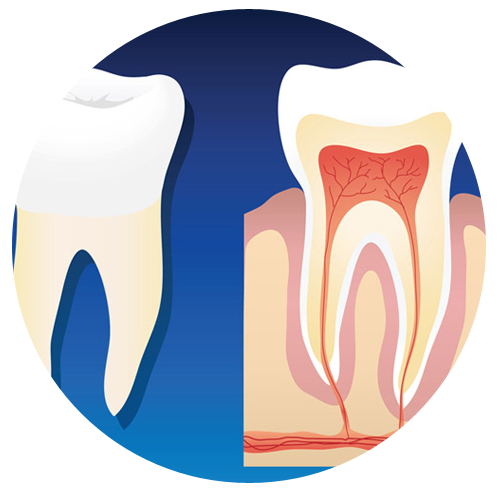Root Canal Treatment

Despite its reputation, a root canal can be no more uncomfortable than having a cavity filled, though the procedure is more complex. It is the removal of infected or dead pulp (the inner nerves and blood vessels) from inside the tooth, and the filling and sealing of the nerve space.
The pulp in a tooth can become infected most commonly from a very deep cavity or trauma. An infected tooth causes discomfort in the form of a severe toothache, throbbing pain, hot sensitivity or gum swelling. When a tooth reaches this point, the only way to keep it is through root canal (endodontic) treatment.
The dentist begins by applying local anesthesia and isolating the area with a rubber dam. Then they drill an opening in the tooth to access the infected pulp, and remove it and clean the area with specialized tools. The dentist fills the root space with a filling material. Finally the dentist must seal the surface of the tooth with a filling and crown to prevent further infection and restore the function and appearance of the tooth.
The root canal treatment is typically performed in one to two visits.
Advantages
Root Canal treatment can heal an abscessed tooth or relieve pain caused by bit pressure on a cracked tooth. They can also relieve chronic sensitivity from hot or cold foods.
Disadvantages
Root canals require more chair time than a filling and are therefore more expensive, but the alternative would be to lose a tooth by extraction.
